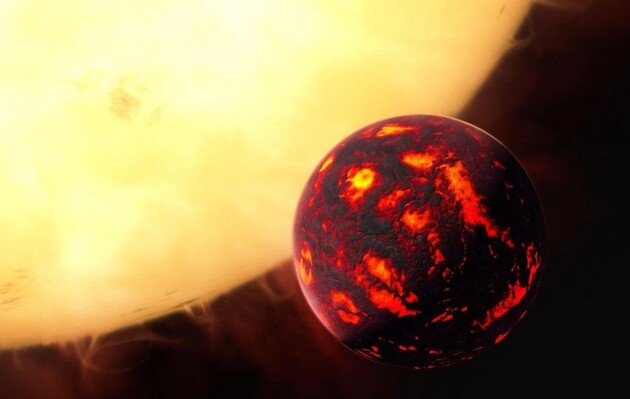Researchers have explained how such planets form in other systems.

Exoplanets are the most common type of exoplanets discovered in the universe. But it remains unknown how such worlds are formed. But now scientists have announced that they have been able to explain the appearance of rocky planets and their satellites similar to the Earth and the Moon, reports Space.com.
In the approximately 30 years that have passed since the discovery of the first exoplanet, scientists have found many worlds not similar to those found in our system. They also include extraterrestrials – rocky planets, up to 10 times larger than ours. Some of them have an atmosphere of hydrogen and helium, which makes them almost like gas giants.
Read also: Scientists found a potentially habitable planet near Earth
The main reasons for the difference between these celestial bodies and the planets of the terrestrial group of the Solar System – Earth, Mars and Venus – remain unclear. For example, extraterrestrials, as a rule, are much larger than the planets of the terrestrial group, their diameters are more similar to the diameters of the ice giants Uranus and Neptune. But recent studies have shown that such planets are as rich in silicates as Earth.
What's more, systems tend to have several super-Earths, which are often similar in mass, orbits and other key characteristics.
“Within one planetary system, the above-grounds are like “peas in a pod. “There's basically a planet factory that knows how to make planets of only one mass, and it just churns them out one by one,” said Andrew Howard, a professor of astronomy at the Cal Institute of Technology, who was not involved in the new study.
< p>But despite the fact that the planets in the same system are similar, there are many types of such planets in the universe.
“The difficulty of modeling the formation of a hyperearth is compounded by the fact that our own solar system does not contain any hyperearth, except perhaps very far away,” said Konstantin Batygin of the California Institute of Technology.
Batygin and his colleague Alessandro Morbidelli , a planetary scientist from the Côte d'Azur Observatory in Nice published a study that can explain the formation of not only super-Earths, but also other rocky planets and moons.
Planetary systems are thought to form from large, rotating disks of gas and dust. These “protoplanetary disks” coalesce over a few million years or so, with most of the gas concentrated on the star at the center of the system, while the solid material slowly coalesces into asteroids, comets, planets, and moons.
Batygin and his colleagues tried to explain how small rocky planets appeared in the Solar System next to the star, and gas giants – on the outskirts. They hypothesized that two different rings – an inner one for rocky planets and an outer one for more massive ones – were involved in the formation of planets in the solar protoplanetary disk. The results of the study show that solid particles can migrate from one ring of the protoplanetary disk to another. Therefore, rocky planets in other star systems can form at different distances from the star and at the same time have both similar characteristics and some differences. Therefore, even in one system there can be different worlds similar to Earth.




